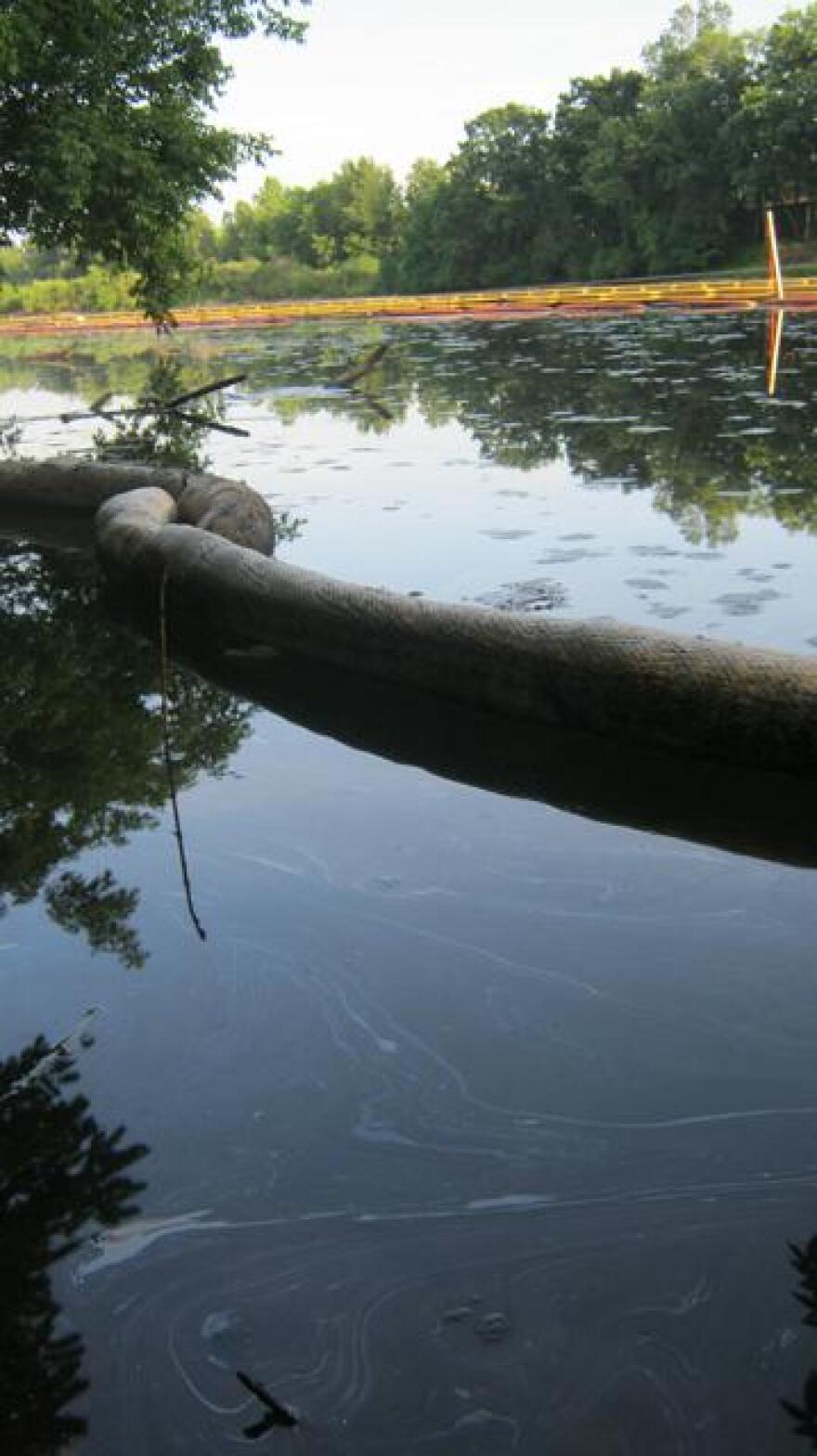It’s been nearly two years since an Enbridge pipeline ruptured near Marshall, leaking more than 800,000 gallons of heavy, thick tar sands oil into the river. Most of it has been cleaned up. What remains has sunk to the river bottom or dried up on the bank.
The Michigan Department of Community Health issued a study today that looked at the safety concernsrelated to oil in sediment in the river. The study looked at the health risks from accidently swallowing or touching the oil that’s left.
State health officials say there's no long-term health risk for people who come in contact with oil in the sediment.
They used data from 2011 samples of sediment with moderate to heavy amounts of submerged oil and came up with three conclusions:
- Exposure to sediment with crude oil could cause temporary effects like skin irritation
- Repeated contact and accidently eating small amounts will not cause long term effects
- Repeated contact and accidently eating small amounts will not result in higher than normal risk of cancer
“An accidental gulp of water that may have small amounts of sheen wouldn’t really be expected to be a concern,” said Dr. Jennifer Gray, one of the toxicologists who did the study. She says there’s no increased risk of cancer, no need to panic if you accidently touch some oil; just wash the affected area with soap and water.
Gray says some people could get a skin rash from the exposure. If they’re worried, she says they should call their doctor. But Gray says parents should keep small children away from dried out tar patties left behind. From the study:
“The remaining oil might be of interest to children. The tar patties are like tiles on the soil and some are pliable and clay-like. If children play with the patties, skin irritation could occur. Oil sheen on the water is shiny and could be rainbow-colored. This sheen may also be of interest to children and may also result in skin irritation. Children should not touch the remaining oil.”
She also advised pet owners to bath animals who may have come into contact with submerged oil.
The study does not evaluate breathing in chemicals from the remaining oil or any public safety concerns posed by the on-going cleanup of oil in the river. Similar studies to address the safety of eating fish from the river and air quality will be released in the future. The study does not evaluate health risks to those first exposed in days after the spill or effects on wildlife.
The researchers used conservative factors in the study. The most oil-dense sediment is in the Morrow Lake delta; they assumed that figure for the entire river. They also assume people are repeatedly ingesting and touching oil at the maximum exposure every day for six months straight.











